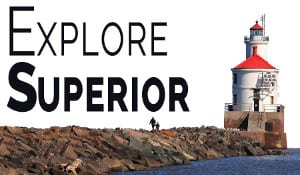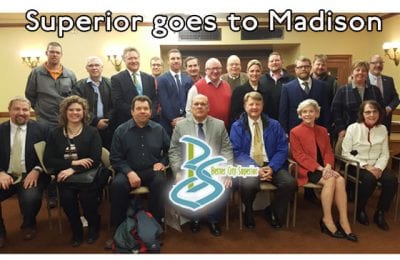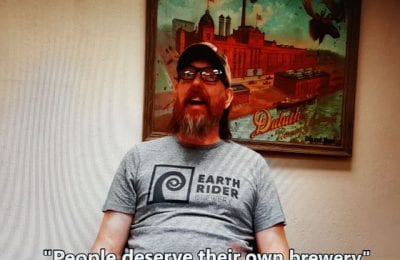What Every Government Official Should Know
Who are we to tell government department heads and elected official how to do their jobs? We’re not really qualified in that realm, but we do feel it is our role to share valuable information when we find it.
With that in mind, ES would like to share the opinions of some professional community development specialists who are with the consulting company SEH. This St. Paul based company with thirty-one locations scattered throughout the Midwest, one of which is located in Duluth, specializes in bringing developments to life.
Their work centers on designing buildings and parks, working for clean water, improving infrastructure, and providing transportation solutions.
In an article entitled “9 Economic Development Concepts Every Official Should Know“, authors Jim Rosenberg, Andrew Dane, and Mike Larson layout principles they believe to be crucial for successful development.
Return of the City
Contrary to a movement from the city to the suburbs that began in the 1950’s, people are returning to the city centers. Millennials are in search of fun activities that are centered in urban areas.
According to Mr. Dane, “Cities and suburbs in or near Greater Metro regions need to be more collaborative, not competitive, in their economic development efforts, knowing that people may live in one suburb and work in another.”
In smaller areas like the Twin Ports, Mr. Dane reports that communities must compete with larger urban areas by investing in technology to remain competitive. In keeping with the suggestions of Better City Superior (BCS), he goes on to say that,
“Quality of life amenities also need to be in place, including your typical rural qualities such as trails, parks, access to the great outdoors … but also vibrant downtowns, however small, with social congregating sites such as coffee shops or art houses.”
Re-Defining “Downtown”
When most of us were young, “downtown” was the place where business was done. After business hours and once street front retail closed for the evening, little action took place beyond the activity that centered around the various bars and restaurants that might remain open late.
Mr. Dane introduces the concept of the “Central Social District” (CSD). Different from the traditional idea of a central business district (CBD), the CSD has evolved into an amalgam of work places, shopping, entertainment, dining, bars, arts and lifestyle activities, where people are “actively participating in the articstic and cultural activities of the community.”
This concept plays directly into the statements of groups like BCS and Twin Ports Stage (TPS) that downtown Superior is in need of expanded nightlife and entertainment what has been traditionally viewed as a business district.
As new mixed-use developments such as the Empire Block are built, downtown Superior will become home to not only retail and business, but also new residential opportunities, which will in turn populate our streets into the evenings. More people on the streets means more commerce and better perceived safety.
Parks for Prosperity
The SEH article goes on to report that according to the American Planning Association, well-designed parks and trails boost property values and increase municipal revenues.
Given the new focus on outdoors recreation that has become fine-tuned in the past decade plus, and the resurgence of interest in the natural wonders of our area, developing a quality park system is not only a means of attracting and holding young people in our area, but also an excellent way of boosting economic value across the board.
Recent proposals by City Councilors Craig Sutherland and Keith Kern regarding connecting the Millennium and Osaugie Trails are in line with this line of thought. Other park development in Superior is the planned renovations for Wisconsin Point with new wood decked access to the beach and centralized parking. These steps will make Superior more attractive to prospective residents, which will enhance our employment base.
Sustainable Transportation
Superior has seen a major change in street design with the Tower Avenue reconstruction a couple years back. Tower now has a center median containing rapidly growing shade trees, tree lined sidewalks, public seating, and a designated bicycle lane. Upon completion, the new rendition of Belknap will no doubt contain some of the same amenities.
According to the SEH article, case study has shown that “retail sales for businesses along a sustainable new street — with traffic calming, tree plantings and improved bike and pedestrian facilities — outperformed two comparable streets by nearly 25 percent.”
By redesigning our CSD streets, we can make Superior more pedestrian and business friendly, and encourage shoppers to return to the downtown. Those benches bike lanes along Tower that are generally empty now, may well be busy in a few years.
Understand Your Workforce
Often times, talk of development degenerates into a debate about whether it will create new “good” jobs. The fact is that many businesses in Superior are desperately in need of employees with the right skills. New development is not just about minimum wage jobs, and as our businesses become more technology driven, Superior will need to attract more, better educated young people to work here.
SEH Community Development Specialist Mike Larson of Duluth encourages city leaders to “understand the skills and availability of workers in your region. With that knowledge, your efforts will be more fruitful.”
Superior has a first-rate university in UWS, not to mention the ability to draw upon UMD, St. Scholastica, and Lake Superior College for job recruits. WITC is also a valuable resource for employment prospects.
It is incumbent on our city leaders to establish close ties to education in our community in order to encourage the development of the proper training programs that meet the needs of our local businesses. Failure to do so will result in those businesses under-performing, or in their leaving town.
Parking Management
Parking may not seem like a big concern in downtown Superior today, but with development comes congestion. Years of flagging businesses, demolition by well-meaning politicians, and the occasional fire has left the stretch of Tower Avenue between N. 3rd and 12th Street with gaping holes between buildings.
Our downtown landscape looks much like the mouth of a gap-toothed ten year old going through growing pains.
New development will need to account for parking needs, and for the purpose of creating an atmosphere of prosperity and activity, these open lots should be used to erect buildings not parking lots.
Planned development must include off-street parking that is attached to but not front and center to new development. Yes Virginia, even Superior will need a parking ramp or two!
Economic Gardening
Nope, we’re not talking about planting corn in the vacant lot left by Mayor Ross’s demolition of the Palace Theatre several years ago.
Economic gardening started in Littleton, Coloradop in 1987, when defense contractor Martin Marietta (now Lockheed Martin) cut its workforce in half. This resulted in a loss off 7500 jobs and 1 million square feet of real estate space being vacated.
Chris Gibbons, Littleton’s director of business and industry affairs had to do something and he had to do it quickly. By working local companies to create new jobs by offering recruiting, incentives and tax rebates, Littleton more than doubled its job base in twenty years and tripled tax revenue while population only increased by 23%.
Last fall, ES shared the story of Ogden, Utah where the efforts of former Mayor Matthew Godfrey turned around a once dying downtown area over the course of fifteen years. Godfrey later formed Better City US, the impetus behind the BCS initiative in Superior.
ES later reported on a 60 Minutes report about the “Golden Triangle” in Mississippi in which they followed the efforts of Joe Max Higgins to attract $6 billion in industry to that area of Mississippi. This is another example of how a community can actively recruit small, medium sized, and even large businesses through hustle and creativity.
Superior cannot solely focus on shipping, railroad, trucking, and pipeline jobs to succeed in the long-term. As our downtown becomes more vibrant and tech based, our leaders will need to recruit small start-up companies to fill the spaces that will be developed by visionaries like Mark Hubbard of the Empire Block. In time, our downtown streets will become populated by pedestrians once again, and the embarrassingly empty bicycle lanes on Tower may well become a preferred manner of getting around town.
Niche Development
There are numerous means of bringing forth economic development through tax credits. The most commonly relied upon tactic is tax increment financing where developers receive tax credits up front to encourage development which are then paid back of a longer period of time of perhaps twenty years or more.
Historic tax credits are being used now to help redevelop the Empire Block at 11th and Tower. Tax credits are also used to create housing and may be employed with the development of a 54 unit apartment building in the works for the Grand-Central block behind the Enbridge building just off of Belknap.
According to Jim Rosenberg, SEH Community Development Specialist, niche development firms specializing in various types of tax credit development are out there, but they can be costly. However, their skill sets often fall outside the typical qualifications of in-house staff in smaller cities.
This is where finding the right consulting company comes into play. Mr. Rosenberg believes cities “need to team with consultants who understand how to successfully leverage these resources, while ethically pursuing the public good.”
The consultant that BCS has aligned itself with is Mr. Godfrey of Better City US. His track record has quantifiable successes to base his guidance on. By working with Mr. Godfrey, the leaders behind BCS have developed a sense of confidence that they are on the right track for Superior. See our interview with BCS head Bruce Thompson HERE.
Risk Assessment
Look before you leap is good advice for communities hoping to reignite their downtown. Discipline is in order and it is imperative that city leaders do vigorous risk assessment and only sign-off on projects that will bring a good return on investment. Simply hoping for the best is not enough.
Unless a project is thoroughly researched and vetted, it could do more harm than good in the end. Similarly, city leaders must ask whether a project would get done without public assistance. Tax increment financing should only be employed in instances where its absence would preclude development, and then only if the project makes sound economic sense over time.
Development deals should provide a sufficient payback to justify public financial participation. That payback may be more than just paying back TIF funds, but also may extend into spurring additional development due to a changed economic outlook for that area.
For example, should the BCS project get off the drawing boards and a 150 room convention-style hotel be built with an attached water park, along with a corporate campus providing new modern office space, that development alone will return public funding over time as TIF is paid back.
However, such a development will likely spur further business development in the downtown area that may not require any public funding but will result due to a reinvigorated downtown business climate. New, small boutique businesses, retail stores, entertainment venues, and restaurants and coffee houses will open to serve the employees of the new development and the residents who will begin moving into second and third floor apartments in buildings such as the Empire Block.
Mr. Rosenberg states that city leaders must do their math to insure that public financing is used wisely with an appropriate reward, but he cautions that some goals are not simply answered by a calculator. He advises that, “a community is wise to work from a vision encompassing overarching goals.”
The Bottom Line
There are no magic wands when it comes to development. Sound, progressive and successful development is work done by people who attend to details. Superior’s new mayor, Jim Paine has already spoken out of his support for starting a new era of development here, and of his goals to create a sustainable and vibrant community.
The work of the BCS group over the past 3+ years, coupled with efforts by Mayor Paine, other elected officials and department heads at the city level, along with the input from Mr. Godfrey and his team has Superior well-positioned to move into a better tomorrow.
Every action or move may well have unexpected results, but if the leaders of our city, both elected, appointed, those in business, and community activists, do their research and continue to communicate in an above board fashion…good things can happen.
Note: ES took the liberty of adding Mayor Jim Paine to the image used with this article. We did so in full recognition that Mayor Paine is fully vested in bringing Superior forward and is well-versed on the topics included herein. By sharing the information in this article with the public, ES hopes to further the conversation of redeveloping Superior and the surrounding county.
Other Stories in the ES Economic Development Series
Business Incubator Hatches Superior Opportunities, August 21st
Why Develop In Superior? – August 18th
Earth Rider Brewery Construction – August 16th
What’s Happening at The Cedar Lounge? – August 14th
Important Economic Development Concepts – August 8th
Video Tour of Empire Block, August 7th
Superior-Douglas County Chamber of Commerce, July 1st
Superior Business Improvement District, June 30th
The Development Association “Grows Biz!”, June 29th
City Planning & Economic Development, June 27th
Small Business Development Center, June 26th
How Development Happens in Superior, June 23rd
Youth Movement Changing Superior, June 22nd




